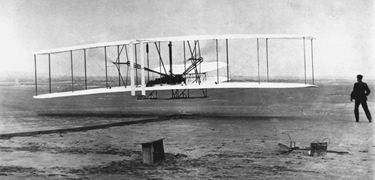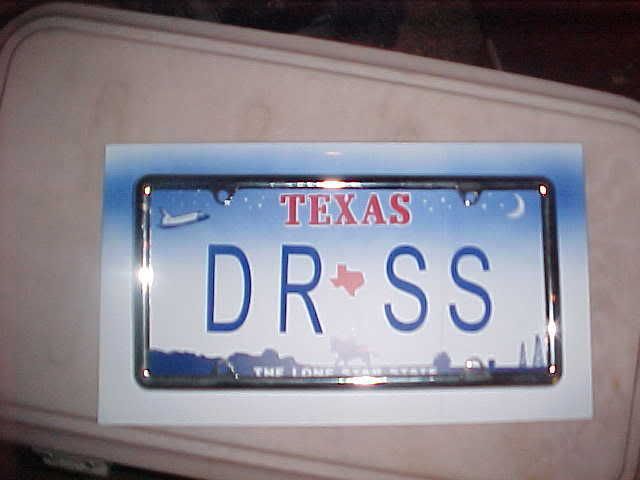

 The Accurate Reloading Forums
The Accurate Reloading Forums  THE ACCURATE RELOADING.COM FORUMS
THE ACCURATE RELOADING.COM FORUMS  Other Topics
Other Topics  Aviation
Aviation  "Tail draggers" or not? Why?
"Tail draggers" or not? Why?Go  | New  | Find  | Notify  | Tools  | Reply  |  |
| One of Us |
I know very little about aircraft. I have seen both propeller and jet aircraft whose landing gear use a wheel near its tail, and aircraft whose landing gear dispenses with that extremely rearward wheel. The "tail draggers" are tilted at rest and at low taxi/take-off speeds, their noses being raised by the angle of its landing gear. Since cargo aircraft and combat aircraft have successfully used both types of gear, what are differences that become important for the airplane that uses a specific type? It's so simple to be wise. Just think of something stupid to say and then don't say it. Sam Levinson | ||
|
| Moderator |
Once off the ground, they both pretty much fly the same, the main differences are in the takeoff/landing and ground handling. It can be argued that with fixed gear a taildragger can be slightly faster due to the less drag from 2 mains instead of 3. For unpaved airstrips taildraggers have the advantages you note of more prop clearance and pitch angle. Now when you go to a paved runway and don't have the drag of the grass to help keep the nose straight you'll see why that nose wheel is kinda handy to have at times, as the main issue between the two types of gear is where the center of gravity is located. On the tricycle gear the CG is in front of the main gear, so any braking or drag from the wheels will help straighten out the airplane when on the ground. However, in a taildragger the CG is behind the mains so during deceleration of any type there will be a turning moment added if slowing down in any direction other than a straight line (the fabled "ground loop"). Easiest way to visualize this is imagine a shopping cart with a couple heavy bags of cat litter in the cart. If you give the cart a big shove across the parking lot it will pretty much go in a straight line or perhaps a slight arc. That is how a tricycle lands/taxis/etc. Now, if you turn the cart around and push it backwards it will behave like a taildragger. As long as it is going straight everything is peachy, but when it starts to turn instead of self-straightening it gets worse as the wheels want to go left or right, but the kitty litter wants to keep going straight which makes the turn angle increase until the cart is sideways and tips over. So long as you keep it pointed straight ahead you don't have any problems, LOL. So I suppose you could make the broad generalization that taildraggers can often be superior when working in and out of unimproved strips, at the expense of greater pilot workload during taxi/takeoff/landing, and don't forget often a greater simplicity and less expense/maintenance. On big huge flat paved airports tricycle gear aircraft usually have the advantage of greater visibility and easier (sometimes much, much easier!) ground handling, takeoffs, and landings. Anyway, I hope that somewhat answers the question you were asking! for every hour in front of the computer you should have 3 hours outside | |||
|
| Moderator |
Also, as a bit of trivia there aren't many taildragger jet aircraft, a main reason being that the blast from the jet engine bounces off the ground and negates the elevator control primarily on takeoff. Here is a pic of a Supermarine Attacker, British naval fighter:  for every hour in front of the computer you should have 3 hours outside | |||
|
| One of Us |
When a taildragger touches down the tail drops increasing the angle of attack of the wing. If the aircraft has "flying speed" for the increased angel of attack it will become airborne at what tends to be a critically low airspeed. This often leads to "Crow hopping" and possible loss of control. The nose gear aircraft sees a reduction of wing angle of attack when the mains touch down and the nose drops to the nose gear thus making touchdown speed a bit less critical. Taildraggers can be landed at higher speeds ("Wheel landing") but a little, nose down control input, technique is required to stay on the ground. All of the above lead to the often used saying that there are pilots who fly taildraggers and aircraft drivers who need the "Training wheel" under the nose. | |||
|
| one of us |
The nose gear is not generally as strong as the main gear, and it's not uncommon to damage it in a hard landing. The taildragger's tailwheel is more lightly loaded and harder to break on a rough runway. There are steerable tailwheels, notably on the Maule, but mostly ground handling is done with the rudder while fast enough and differential braking after the plane slows down. TomP Our country, right or wrong. When right, to be kept right, when wrong to be put right. Carl Schurz (1829 - 1906) | |||
|
| one of us |
Most light conventional gear aircraft have a steerable tail wheel. You don't need "speed" to steer them however you need wind over the rudder. We are provided that wind via propeller and a throttle. Differential braking should only be used for tight maneuvering on the ground. I much prefer flying a conventional geared aircraft to a nose wheel aircraft. There is a learning curve and it's a steep one especially for folks who didn't learn to fly with a tail wheel. But once you master the tail wheel a nose wheel will feel cumbersome to you. | |||
|
| one of us |
Most of the taildraggers I've seen were old ones on grass strips that were often turned around by hand before going out on a taxiway, so my direct experience is limited. Interesting, the Grumman AA has a castering nosewheel, and is mostly steered with rudder and differential braking. TomP Our country, right or wrong. When right, to be kept right, when wrong to be put right. Carl Schurz (1829 - 1906) | |||
|
| one of us |
Are you referring to really old airplanes like WW I era that had tail skids instead of tail wheels? I actually like a locking tail wheel better that a fully steerable tail wheel. When you unlock a free castering tail wheel you can maneuver very tightly. In the wind you can lock it for better taxi stability. Once again there is a learning curve. | |||
|
One of Us |
on occasion, I have the opportunity to fly a Cessna 140.. taildragger,, great for short hops, its fun to fly low and slow and look at stuff... life goes by faster in a Cessna bearcat 310n... go big or go home ........ DSC-- Life Member NRA--Life member DRSS--9.3x74 r Chapuis | |||
|
| One of Us |
Cessna 180, then Canadian Car And Foundry Harvard Mk4 (T-6 Texan) Think about riding a tricycle backwards at 70 mph in a cross wind. Yup, landings could be fairly interesting. Wheel landings in the T-6 taught me more about rudder control than I ever thought existed. (Plus, learned just how much a person can sweat while sitting in a hard seat moving only hands and feet.) In the C180, sometimes if there was a bad crosswind, I'd line up into it crossways on the runway for takeoff. Flying off grass runways was much easier. | |||
|
| Powered by Social Strata |
| Please Wait. Your request is being processed... |
|
 The Accurate Reloading Forums
The Accurate Reloading Forums  THE ACCURATE RELOADING.COM FORUMS
THE ACCURATE RELOADING.COM FORUMS  Other Topics
Other Topics  Aviation
Aviation  "Tail draggers" or not? Why?
"Tail draggers" or not? Why?

Visit our on-line store for AR Memorabilia

